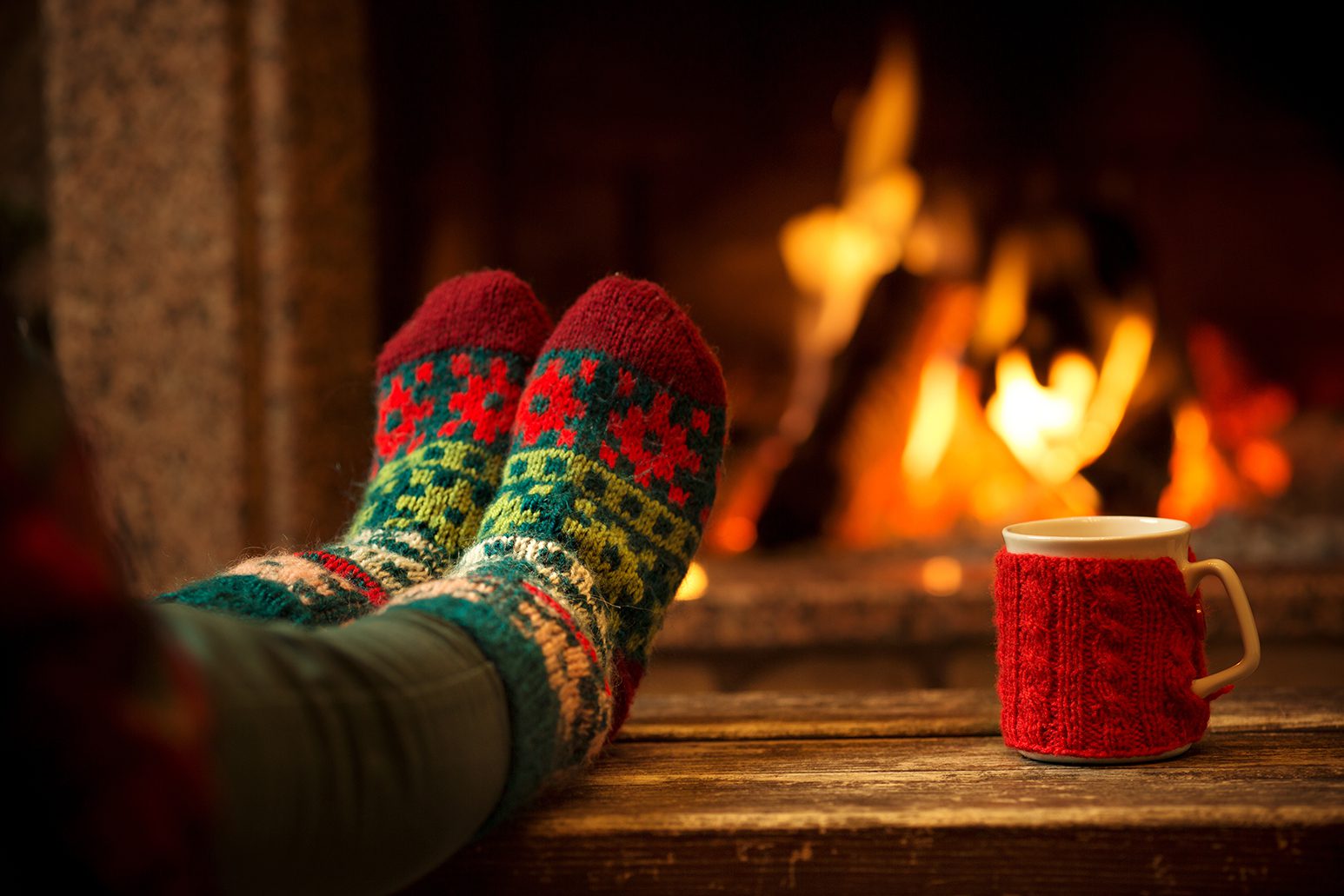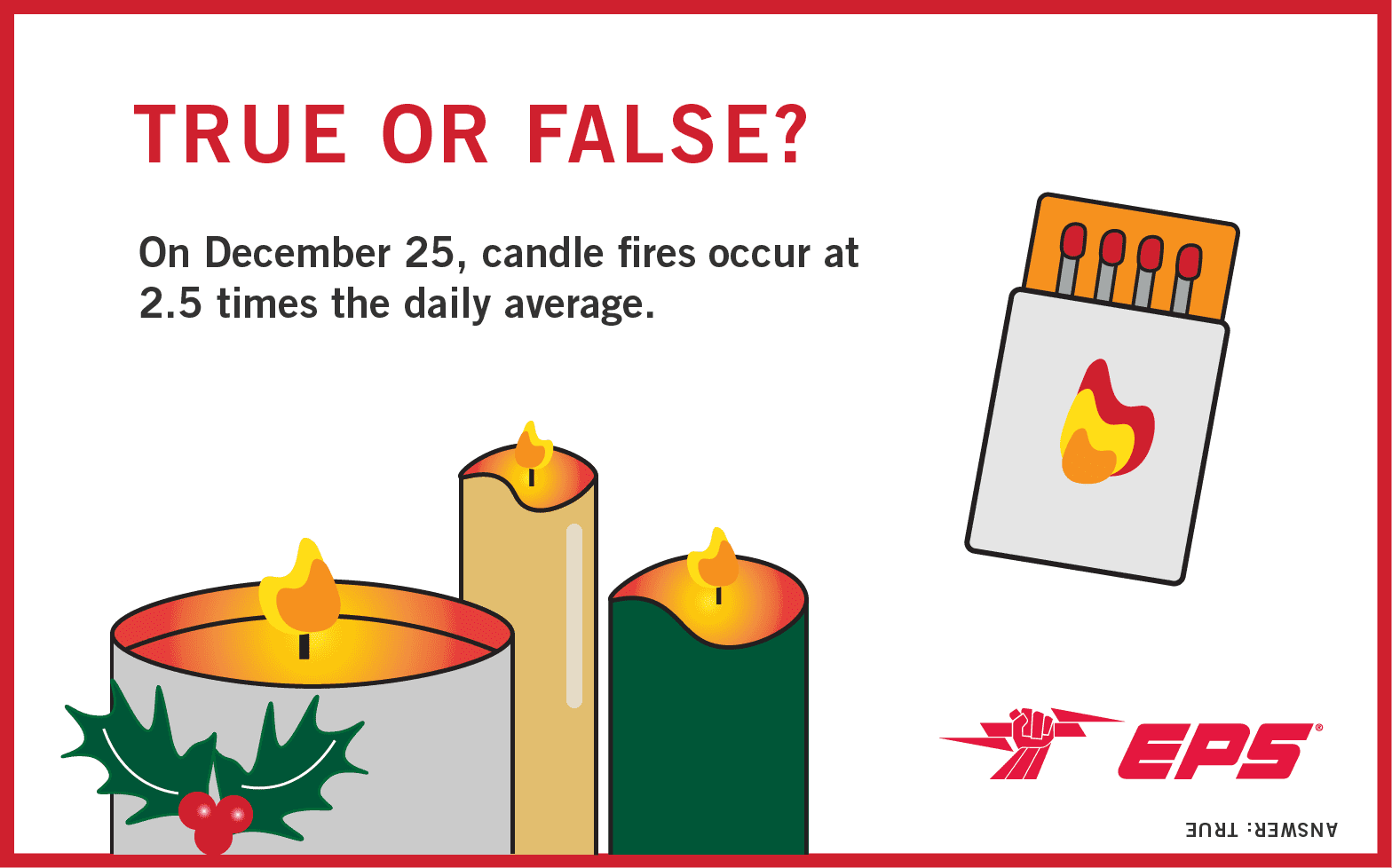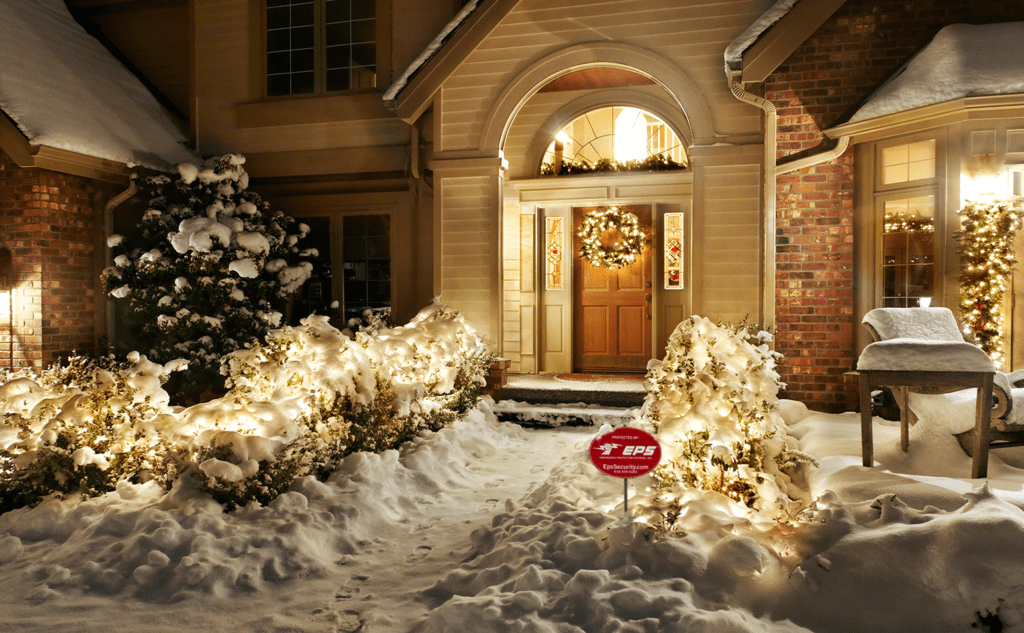
 As chestnuts roast on an open fire and stockings are hung by the chimney with care, fire safety should be top of mind this holiday season. With residential fires peaking in December and January, EPS Security is here to provide the safety tips needed to freeze out home fires.
As chestnuts roast on an open fire and stockings are hung by the chimney with care, fire safety should be top of mind this holiday season. With residential fires peaking in December and January, EPS Security is here to provide the safety tips needed to freeze out home fires.
From 2017 to 2021, the National Fire Protection Association (NFPA) reported U.S. fire response to 150 home fires starting with Christmas trees alone. The NFPA reports an additional response to 793 fires beginning with holiday decorations. Before visiting the local tree farm or sipping cocoa fireside, take our short quiz to see how prepared you are to protect your home from holiday catastrophe.
Pop quiz: Holiday home fire safety
All holiday decor should be placed how many feet from a heat source?
- Two feet
- Three feet
- Six feet
Holiday decor—and all flammable material—should be placed at least three feet from any heat source. This includes fireplaces, space heaters, candles, and more. The NFPA reports in nearly one fifth of Christmas tree fires, a heat source was too close. (b. Three feet)
True or False: Holiday lights labeled “indoor” or “outdoor” can really be placed anywhere.
- True
- False
The labels are there for a reason. While it is relatively safe to bring outdoor lights inside, inside lights should never be hung outside the home. Indoor lights have not been tested against water and weather conditions, and when encountering moisture, may become an electrical hazard. Weather conditions could also fray the light cords, creating a major fire risk. Reading the labels before hanging string lights is important in reducing risks to yourself and to your home. (b. False)
Typically, it is safe to connect how many strings of holiday lights?
- Three
- Five
- Seven
According to the American Red Cross, you should only connect three strings of holiday lights. When hanging holiday lights, it is also important to examine the cords to ensure they are not frayed or otherwise damaged. Wires should not be exposed on cords, nor should cords or bulbs be hot to the touch. If this describes any of your light decor—toss it out. The cost of fire damage far outweighs the cost of new lighting. (a. Three)

True or false: Fires starting with candles occur at 2.5 times the daily average on December 25.
- True
- False
True. Candle fires account for 11% of all fires in December and in January, with December 25th having the highest rates. When lighting your holiday candles, be sure they are three feet from any flammable material, and out of the reach of pets and children. When you leave the home or go to sleep, be sure to properly extinguish all candles. (a. True)
True or False: Real Christmas trees should be watered daily to reduce flammability.
- True
- False
If your family prefers a live tree, select a fir that appears fresh and does not have browning leaves. Dried leaves are more likely to catch fire, and as browning needles fall, they are more likely to encounter heat sources—even if placed at a three foot distance. With a live tree, it is important to water it daily in order to reduce fire risk.
If selecting an artificial tree, there are also steps you can take to reduce fire risk. Already, artificial trees are less likely to be involved in home fires. When shopping for an artificial tree, add an extra level of protection by selecting a tree that reads “flame-retardant.” These trees are sprayed in a fire-resistant coating. If you already have an artificial tree, you can purchase this spray separately and coat your tree from home. Look for flame-resistant coating at your local department store. (a. True)
The benefits of 24/7 alarm monitoring
Congrats—you passed! While these tips are effective at reducing risk, they are not fail proof. One of the best ways to protect your people, places, and things, is to invest in a monitored home alarm system. Monitored devices—from smoke and CO detectors, to door contacts and motion sensors—send signals to a designated monitoring center when they alarm, prompting a rapid response. In a monitoring center, trained operators handle your alarm events with urgency, contacting you to ensure all is okay, and dispatching emergency responders when needed.
With fires especially, timing is everything. Just mere seconds can change the trajectory of a fire event entirely. When a monitored smoke or heat detector alarms, this signal prompts immediate dispatch of your local fire department, meaning help will be on the way in mere minutes.
 The EPS advantage
The EPS advantage
EPS Security has provided customized security solutions to Michiganders for over 66 years, partnering with you to protect what matters most. At EPS Security, our award-winning Monitoring Center works around the clock—24/7/365—to ensure your safety. From protection against fire and carbon monoxide, to intrusion alarm systems which warn off burglars, our full-service, family-owned company is here to assist you in meeting your unique security needs.
